Have you noticed your cucumber leaves curling and can’t figure out why?
Don’t worry; this comprehensive guide is designed to help you identify and solve the issue to get your garden back on track for a bountiful harvest.
Table of Contents
Cucumber Leaves Curling
Cucumber leaves curl for a variety of reasons, including pests, diseases, water imbalances, and nutrient deficiencies. Identifying the cause of the curling is crucial for effective treatment. Addressing the issue promptly can prevent crop loss and ensure a healthy harvest.
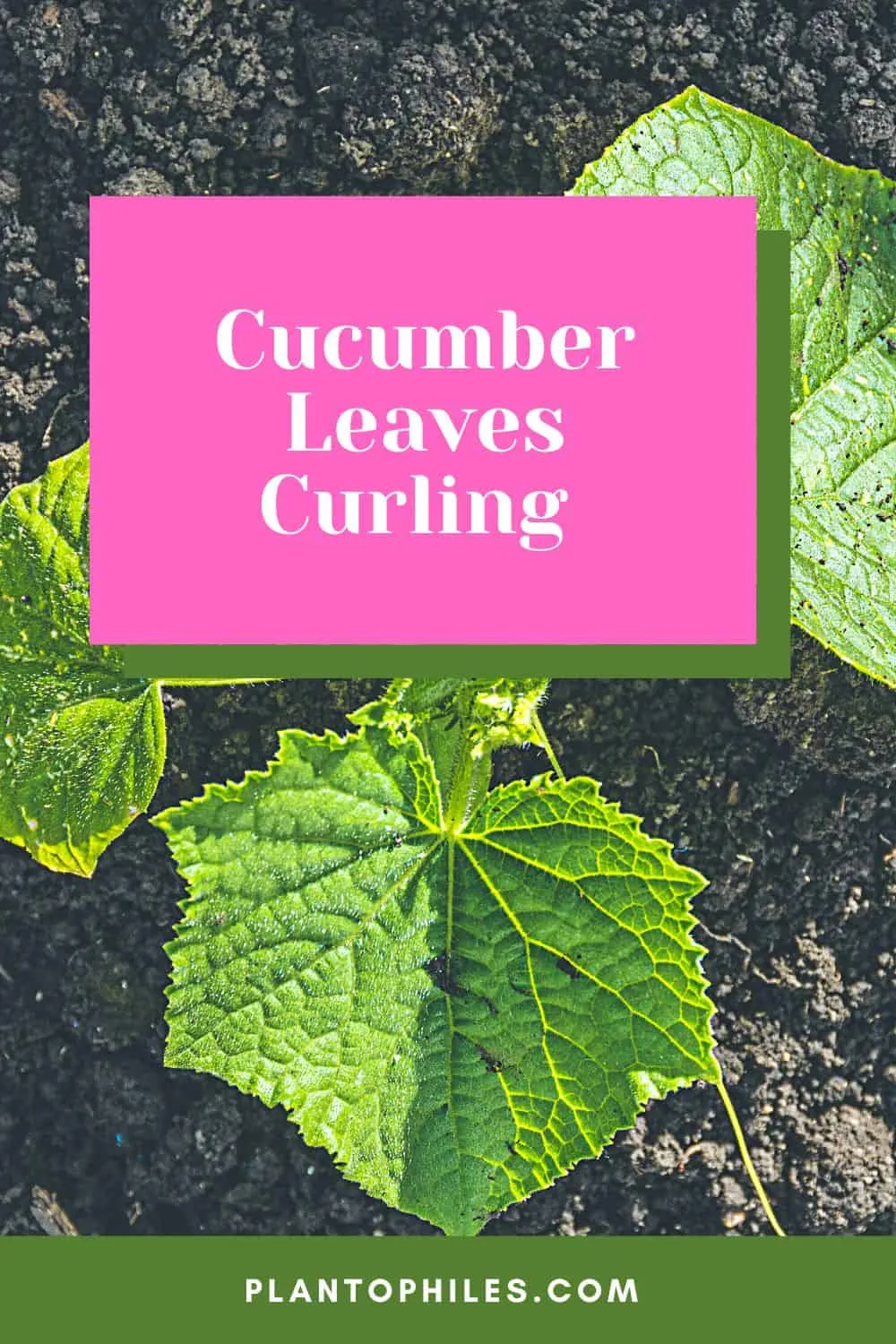
Cucumbers are amazing in that they basically tell you what the problem is by the direction and shape their leaves curl.
By inspecting the leaves, you will get a pretty good idea of the problem, which is at least halfway to fixing the issue.
1. Cucumber Leaves Dry and Curling Downward at the Leaves’ Edges
These are the reasons for dry cucumber leaves curling downward at the leaves’ edges:
a) Cold Ambient Temperatures of Less than 65°F.
Cucumbers cannot absorb nutrients at these temperatures. Also, even lower temperatures will physically harm the plant leaving cold lesions on its stem and leaves.
b) Incorrect Watering
Incorrect watering causes this type of curling. Even though the plant’s leaves curl and dry, anti-intuitively, it is still possible that overwatering is causing the problem.

However, I must say that nearly all the time I’ve seen this, the problem was caused by underwatering.
c) Insufficient Light
Insufficient light is yet another cause of this symptom.
Cucumbers adore soft light, so putting them in dark, dreary places is guaranteed to make them morose and unwell.
d) Nutrient Deficiencies
Deficiencies in nutrients, particularly potassium and nitrogen.
It is incredible the number of issues fertilizing plants causes, and careless fertilization has no less a harmful impact on cucumbers than on other plants.
e) Planting Cucumbers too Closely Together
Cucumbers love lebensraum (living space), and they get distressed if it isn’t given to them. (If you know your world history, I could say more here, but I’d better not.)
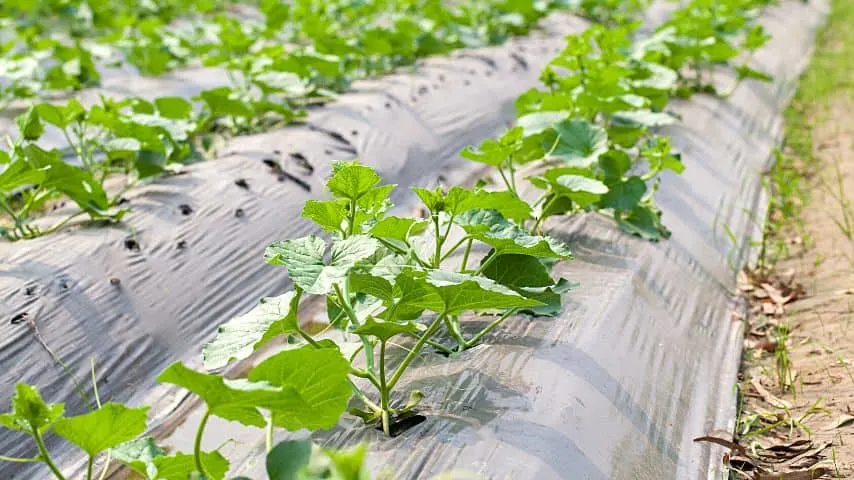
2. Cucumber Leaves Curling Inward
Reasons for cucumber leaves to curl inward are:
a) Nutrient Deficiency
This condition – the entire leaf curls inward – arises indirectly due to nutrient deficiency.
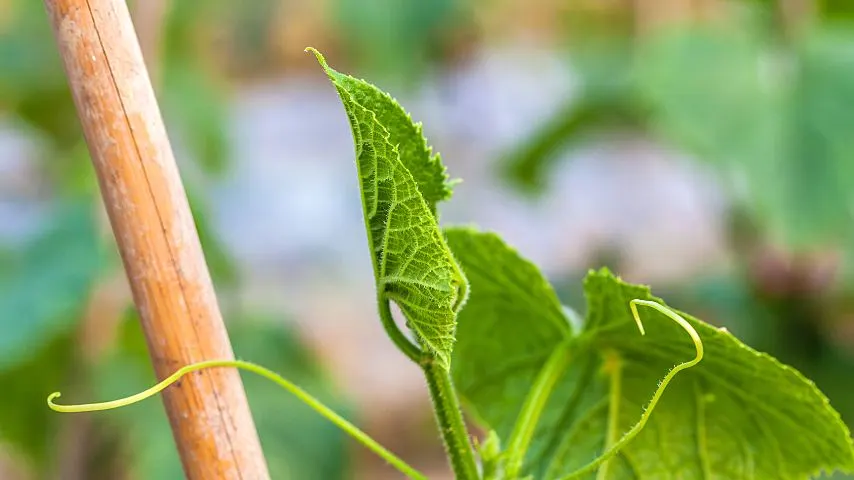
Usually, cucumbers can extract enough water for their use when there is sufficient water in the air, and the cucumbers themselves have the required quantities of nutrients in their system.
However, when denied the right amount of nutrients, cucumbers struggle to get the moisture out of the air and curl their leaves inward to lessen water loss to the environment.
If you should see this happening to your cucumbers regularly, you must take remedial action as soon as possible. The best way to do that is to feed the plants an appropriate fertilizer.
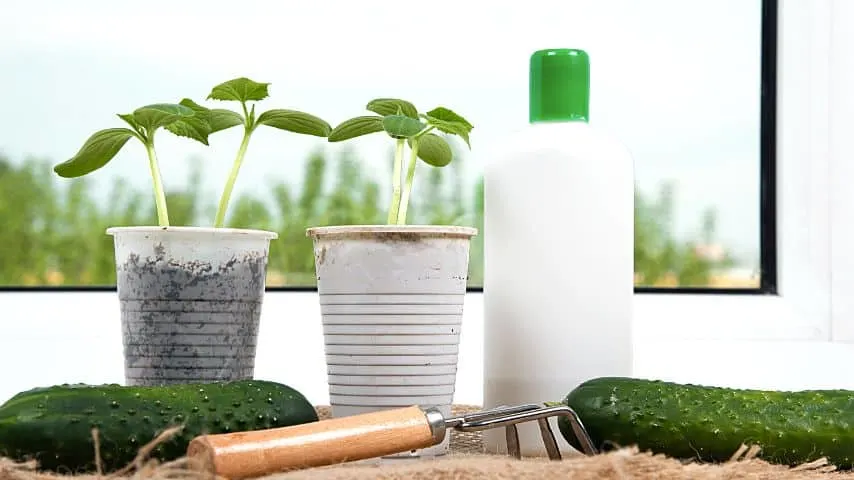
When You Need Fertilizers
To discover which fertilizer to get, begin with a laboratory soil test.
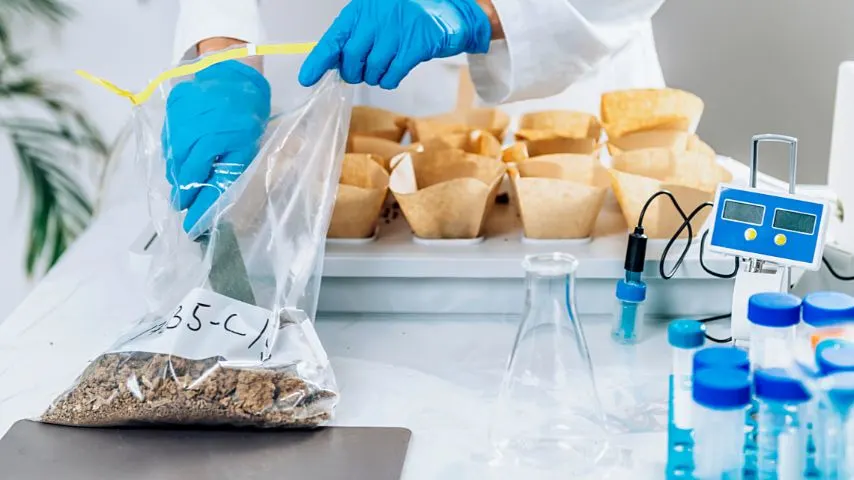
Admittedly, this can take some time, not to mention it’s never a convenient time to spend money on such things, so you might use a shortcut and employ a pH test instead.
If the soil is acidic, use a nitrate-based nitrogen fertilizer to alkalize the earth, or use an ammonium-based nitrogen fertilizer if the soil is alkaline.
In a pinch, you might simply feed your cucumbers a broad-spectrum fertilizer.
Furthermore, you can always fall back on those venerable stalwarts, a tablespoon of chelated iron with a tablespoon of Epsom Salt.

When You Don’t Need Fertilizers
Be aware that cucumbers curl their leaves inward on hot, sunny days anyway. Don’t tamper with fertilizers and pH soil testers just because of a warm spell.
On hot days with greater than average sunshine, simply wait for evening and give your cucumbers a quick splash of water – but don’t overdo it.
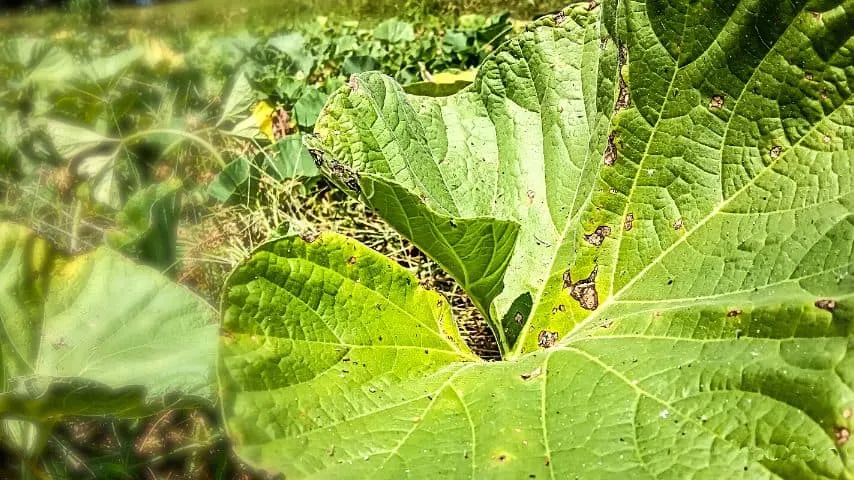
Don’t go from starvation to deadly feast mode and waterlog your crop.
b) Pests and Diseases
When accompanied by a change of color or the appearance of colored spots, inward-curling leaves signal a pest attack or disease.
Look out for colored spots on cucumber leaves that are either dark or pale and stripes.
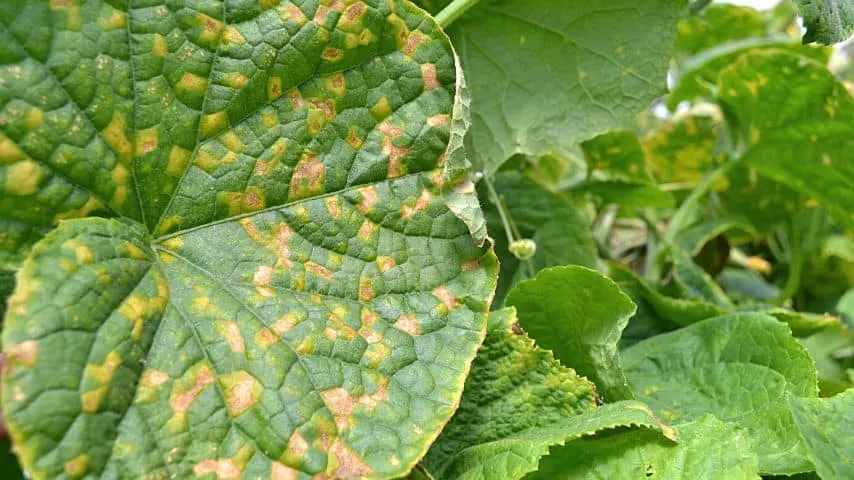
Sometimes the entire plant might turn yellow, which is pretty much “goodnight Vienna” and “sayonara,” because at this stage, unfortunately, the plant is already past saving.
3. Cucumber Leaves Wrinkling and Crinkling, like Heat-exposed Polyurethane
a) Insufficient Water
Wrinkled leaves primarily indicate insufficient water.
Cucumbers are a thirsty crop and need watering up to four times a week. If they don’t get this quantity of water regularly, they suffer withering from the inside out, resulting in crinkled, strange-looking leaves.
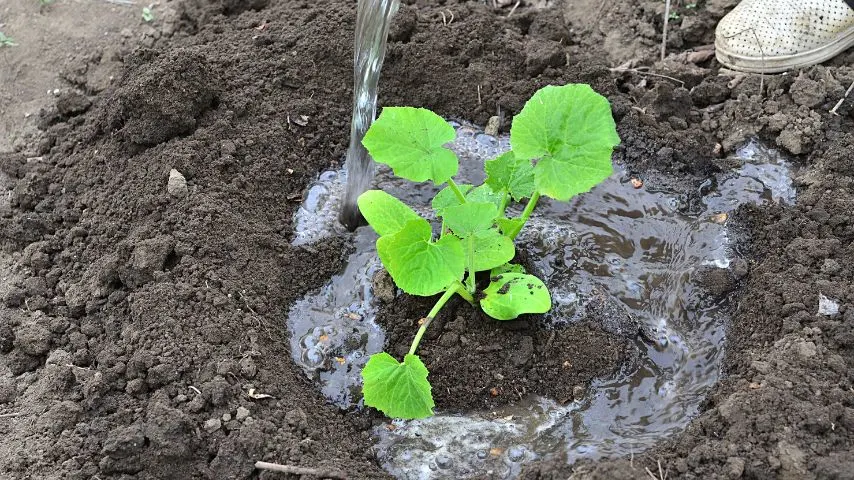
By the time cucumber leaves have reached this level of distress, it is generally too late to recover from the situation just by watering them.
I suggest you use a weak mixture of trichodermin, potassium permanganate, and Fitosporin for about a week or until the leaves show strong signs of full recovery.
All the mixture’s ingredients are mild but effective: antibacterials, antifungals, and general disinfectants. Distressed cucumbers are easily invaded by all sorts of diseases and fungi.
b) Insufficient Nitrogen
In this form of curled leaves, if the issue is nitrogen insufficiency, there is no need for nitrogen fertilizer.
Instead, use urea or chicken manure to fix the problem.
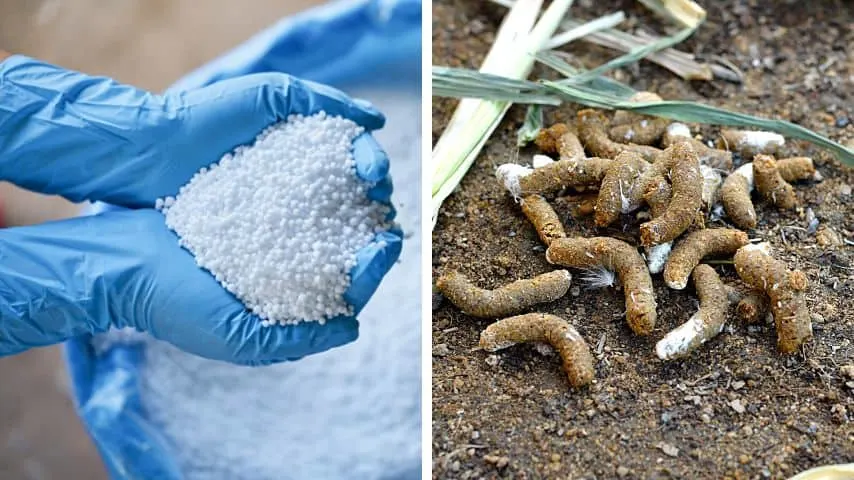
c) Harsh Sunlight
As much as cucumbers adore soft light, they hate harsh, direct sunlight with a passion.
When exposed to strong sunlight, such as the midday sun, their leaves crinkle due to the ill effects of too-warm fluids in their capillaries and veins.
To lessen the impact of harsh sunlight, provide a broad-planked lattice, with each horizontal slat about five inches wide. Leave a six-inch space between the slats.
This construction will mean that when the sun is overhead, enough of each cucumber will be in the shade, while exposed parts will be in the sun for only a few minutes.
What is good about this technique is that as the sun rises or sets, it still provides the plants with soft light.
4. Cucumber Leaves Curling Upward at the Edges
Upward-curling leaves signal that your cucumbers lack essential nutrients. The ones in question here are zinc, potassium, and calcium.
Use a general, broad-spectrum fertilizer to replenish the soil and gently nurse your cucumbers back to health again.

Daniel has been a plant enthusiast for over 20 years. He owns hundreds of houseplants and prepares for the chili growing seasons yearly with great anticipation. His favorite plants are plant species in the Araceae family, such as Monstera, Philodendron, and Anthurium. He also loves gardening and is growing hot peppers, tomatoes, and many more vegetables.


